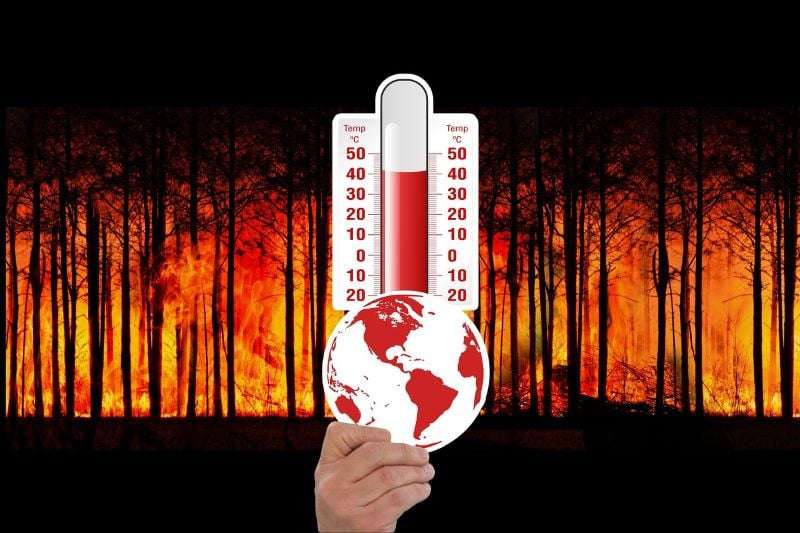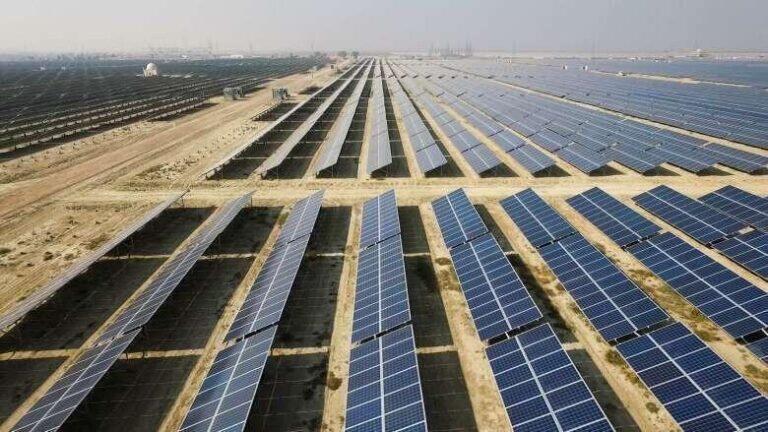
|
Getting your Trinity Audio player ready...
|
Climate change continues to be one of the most pressing global challenges, with its impacts felt across every continent. As nations strive to combat the accelerating climate crisis, China has positioned itself as a key player in global climate action. At a recent seminar focused on climate finance, China shared its experiences, strategies, and resources with representatives from 13 countries, emphasizing its role in facilitating international cooperation on climate change. This article delves into the specifics of China’s climate finance initiatives, the state of greenhouse gas emissions globally, and the significance of South-South cooperation in tackling climate change.
China’s Commitment to Climate Finance
Promoting Climate Action through Financial Support
Climate finance is essential for developing countries that are most vulnerable to climate change. These nations often lack the financial resources necessary to invest in sustainable infrastructure, renewable energy, and climate-resilient practices. The 2015 Paris Agreement recognized the need for developed countries to provide $100 billion annually to assist developing nations in their climate change efforts. However, the reality has been far from expectations, with many developed nations failing to meet their financial commitments.
During a recent seminar in Beijing, Chinese officials, including Chen Zhihua, Deputy Director of the National Centre for Climate Change Strategy and International Cooperation, emphasized the gap between the climate finance promises and actual disbursements. According to Chen, the annual $100 billion target set by developed nations as part of the Paris Agreement remains unmet. This shortfall is particularly concerning as developing countries face increased climate impacts, such as rising temperatures, extreme weather events, and sea-level rise, all of which hinder their economic development and exacerbate poverty.
China’s role in climate finance is becoming increasingly prominent, not only through financial support but also by offering technical assistance and building partnerships with other developing nations. The Belt and Road Initiative (BRI), which connects China with more than 60 countries across Asia, Africa, and Europe, is one of the most ambitious platforms for fostering climate finance and investment.
South-South Cooperation: A Model for Climate Action
China’s commitment to South-South cooperation, a model of collaboration between developing countries, has grown significantly over the years. Through this framework, China aims to share its experiences, technologies, and financial resources with countries that face similar challenges. In the context of climate change, this cooperation is especially vital.
The Belt and Road Capacity-building Seminar on Financing Mechanisms and Carbon Finance, held recently in Beijing, brought together 21 officials and climate professionals from countries including Pakistan, Indonesia, Brazil, Laos, Cambodia, and Honduras. These nations have been directly impacted by climate change, and many lack the resources to adapt effectively. By hosting such seminars, China is not only providing financial and technical support but is also facilitating knowledge exchange and best practices for tackling climate challenges.
One of the key takeaways from the seminar was China’s emphasis on the importance of carbon finance—an innovative mechanism that allows businesses, governments, and organizations to invest in projects that reduce greenhouse gas emissions. Carbon finance plays a critical role in helping developing countries transition to low-carbon economies by providing the necessary funding for clean energy projects, sustainable infrastructure, and forest conservation.
The Role of Carbon Markets in Mitigating Climate Change
The carbon market is a vital tool in reducing global carbon emissions. China has developed a national carbon trading market that is expected to become one of the largest in the world. The carbon market is designed to cap overall emissions and allow companies to trade carbon allowances, incentivizing them to reduce emissions through market-driven mechanisms. China’s national carbon trading scheme, which initially focuses on the power sector, is a step toward expanding the country’s green economy and promoting sustainable development.
Through its experiences in carbon finance, China has been able to offer valuable lessons to other developing nations. By sharing knowledge about carbon pricing, emissions trading systems, and the integration of green technologies, China is playing an essential role in advancing global efforts to reduce carbon emissions.
Global Greenhouse Gas Emissions: The Current State
Concentrations of CO2 and Methane: Rising to Alarming Levels
While international climate finance initiatives are crucial, the global situation regarding greenhouse gas emissions remains concerning. According to the World Meteorological Organization (WMO), CO2 concentrations in the atmosphere are now 51% higher than pre-industrial levels. Methane, another potent greenhouse gas, has increased by a staggering 165% since 1750. These increases are contributing significantly to global warming and the destabilization of global climate patterns.
The rapid rise in greenhouse gas emissions is directly linked to human activities such as fossil fuel combustion, industrial production, and deforestation. The WMO’s report highlights the urgency of addressing these emissions if the world is to avoid the worst impacts of climate change, such as widespread droughts, floods, and heatwaves.
China, as the world’s largest emitter of greenhouse gases, faces significant challenges in reducing its emissions. However, the country has made notable progress by committing to peak carbon emissions by 2030 and achieving carbon neutrality by 2060. These ambitious targets are part of China’s broader strategy to transition to a green economy and align with global climate goals.
China’s Actions to Address Climate Change
Investments in Renewable Energy and Green Technologies
In recent years, China has become a global leader in renewable energy. The country is the largest producer of solar panels and wind turbines and has made massive investments in clean energy infrastructure. By increasing the share of renewable energy in its energy mix, China is working to reduce its reliance on coal and other fossil fuels, which are the primary sources of greenhouse gas emissions.
The Chinese government has also been investing in electric vehicles (EVs) and green transportation, which are crucial for reducing emissions in the transportation sector. With significant investments in battery production and EV infrastructure, China is positioning itself to lead the global transition to clean transportation.
Urban Sustainability and Green Finance
As the world’s most populous country, China faces immense challenges related to urbanization. To address these challenges, China is incorporating sustainability into its urban planning strategies. The government has committed to building eco-friendly cities with efficient public transportation, energy-efficient buildings, and green spaces that reduce the urban heat island effect.
Furthermore, China’s green finance initiatives are playing an essential role in promoting environmental sustainability. Green bonds, which finance projects with positive environmental impacts, are becoming increasingly popular in China. The country’s green bond market is one of the largest in the world, helping to fund renewable energy projects, energy-efficient buildings, and clean transportation initiatives.
Conclusion: A Global Effort to Combat Climate Change
China’s actions in the realm of climate finance and its dedication to South-South cooperation are helping to foster a more collaborative global effort to combat climate change. While the challenge remains immense, initiatives like the Belt and Road Capacity-building Seminar and the country’s carbon finance mechanisms are helping to provide the resources and knowledge that developing countries need to build climate resilience.
With greenhouse gas emissions continuing to rise at alarming rates, it is clear that the world must unite to address the climate crisis. As one of the world’s largest economies and greenhouse gas emitters, China’s role in global climate efforts is critical. By continuing to invest in clean energy, green finance, and international cooperation, China is paving the way for a sustainable future, not just for itself but for the entire planet.
FAQs
1. What is the significance of China’s climate finance initiatives?
China’s climate finance initiatives are vital for providing developing countries with the financial resources and technical support needed to combat climate change and transition to sustainable economies.
2. What is South-South cooperation, and why is it important for climate change?
South-South cooperation refers to collaborative efforts between developing countries to share resources, knowledge, and best practices. In climate change, this cooperation is essential for countries facing similar environmental challenges to work together and find solutions.
3. How is China addressing its own greenhouse gas emissions?
China has committed to peak carbon emissions by 2030 and achieve carbon neutrality by 2060. The country is investing heavily in renewable energy, electric vehicles, and green infrastructure to reduce emissions.
4. What role do carbon markets play in fighting climate change?
Carbon markets, such as China’s national carbon trading scheme, cap overall emissions and allow companies to trade emissions allowances, providing financial incentives to reduce emissions and shift to cleaner technologies.
5. How can developing countries benefit from China’s climate finance initiatives?
Developing countries can benefit from China’s climate finance initiatives through access to funding for clean energy projects, technical assistance in carbon finance, and partnerships for climate resilience.
MUST READ:
https://skipper.pk/2024/11/10/tesla-hits-1-trillion-value-amid-rally-following-trumps-victory/






